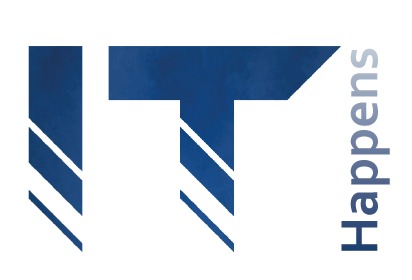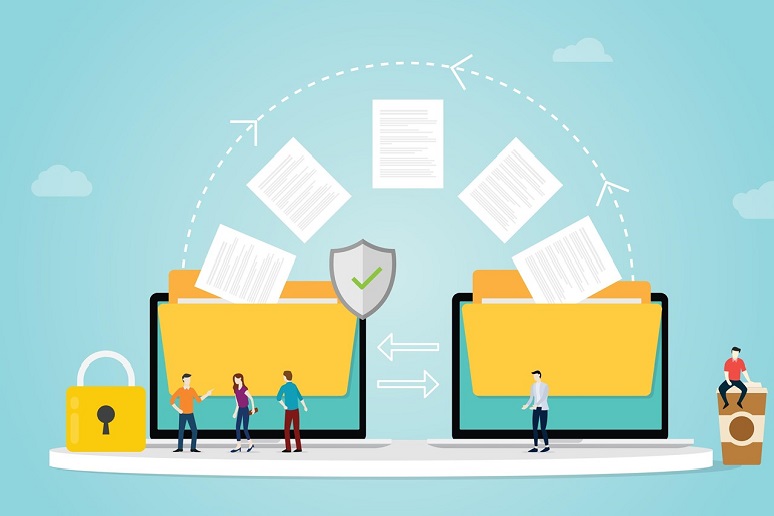- Introduction
At the end of 2019, China informed the World Health Organization (WHO) about the emergence of a (potentially) deadly virus, threatening modern society. At the beginning of 2020, one of the metropolitan areas of China went into lockdown due to, by then known as, the Coronavirus, also known as COVID-19. Within three months, the WHO officially called it a pandemic. In March 2020, the Netherlands was impacted by the COVID-19 virus. By then it became clear that sophisticated information management proves its potential added value. As Prime Minister Mark Rutte said: “we have to take 100% of the decisions with 50% of the knowledge”. Later on, this sentence phrased the characteristics of any further step taken to contain the COVID-19 virus.
- What is the dilemma?
An event is a crisis when it significantly threatens the operations of an organization or country and that can have negative consequences if not handled properly. Crisis management has two goals: first to minimize the potential risk before a triggering event, and secondly to protect stakeholders. The primary concern during a crisis is public safety. Once authorities fail in assuring public safety, it damages the reputation of the authorities and is followed by financial concerns [1].
Research often indicates that during a crisis relief workers are often more concerned with receiving information instead of providing information to others who may benefit from it [2]. The question arises, why it is so hard to share and coordinate information during a crisis, while knowing that improvements of the coordination enhance efficiency and effectiveness [3][4]. Poor information sharing and coordination during disaster response have a negative influence on the decision-making process [5][6][7]. Whereas the decision-making process depends on the situational awareness. Situational awareness is the part of a crisis that is known. A widely accepted definition describes situational awareness as “the perception of elements in the environment within a volume of time and space, the comprehension of their meaning and the projection of their status in the near future” [8]. Situational awareness is necessary for crisis management because it is not only creating a correct perception of the circumstances, but creating a correct perception of relevant elements of current reality to decide on an appropriate response for the near future [9].
2.1 Why is this a dilemma?
It is proven that information is not always shared, although the benefits are known. It is not clear what influences the relationship between information sharing and situational awareness. This article elaborates on what withholds information sharing, even though the benefits of sharing information are known.
- What is information sharing?
Information sharing in this article is defined as providing information to other people who have certain information needs based on a voluntary basis and does not require any hierarchical influences [10]. Information needs traditionally denote seeking new information with the use of an information retrieval system. Information need is a paradox: with the need for food or shelter, any individual knows what is required to fulfil this need. With the need for information, individuals often do not know what is required to fulfil their need. When combining the characteristics of information needs with the creation of situational awareness, it indicates that we constantly seek and find information whereas our need stays the same [11]. People question themselves trying to find the right answer, without knowing what the right answer will be or when it appears. This could contribute to the dilemma of what withholds information sharing, because apparently people do not know what the right answer will be that will contribute to gaining information for better situational awareness.
Whenever there is an information need, there is an information offer. The information offer is not as clear as the information need. There is a negative relation between the cognitive load and information requirements. Cognitive load is the amount of new information a person can process in within a certain amount of time. In a complex, intense and information-rich environment such as a crisis, it can easily lead to a cognitive overload. The negative relationship results in a performance that does not match the information that is available in the first place [12]. The information is available but cannot satisfy the information needs. It is important to determine the right information needed to answer to the need and then customize the information offer to prevent information overload.
The contribution to the dilemma of why information sharing encounters issues may be that crisis workers aren’t always aware that they possess valuable information. At the same time these crisis workers operate in a complex and intense environment which doesn’t enables them to process information and satisfy their information needs with information offers.
3.1 Where does information sharing come from?
Information sharing influences the process of creating situational awareness by influencing the process of creating the right perception of circumstances. The concept of situational awareness finds its origin in aviation and military research [9]. For example, pilots must deal with a large amount of data which comes from a variety of sources. Secondly, the pilots have to deal with the dynamics of a flight deck, relevance of different data and events that are context- dependent. Lastly, situational awareness deals with temporal dimensions, which indicate that minor failures may not be crucial on its own but may revolve to become a major threat [8].
The majority of aviation accidents have a human error causal component, which can be attributed to the loss of situational awareness [9]. Reliable information may be an elusive target, such as human reports or sensors that are only accurate to a certain resolution. Moreover, it may be old information once it is gathered. Even worse, information may be missing [13].
Today’s problem is not about the lack of information but finding what information needs and potential information offers are valuable to others. Also known as the paradox of big data, which states that data is only valuable if insights can be derived from it. There is a huge gap between data produced and the ability of people to find the bits that are needed and to process them to arrive at actual information that is required for decisions [13].
3.2 What do we experience during information sharing?
Sharing information, creating situational awareness and experiencing barriers happens at three levels. First, the individual level, which refers to one particular person. Second, the team level, which refers to persons who are connected through work or activity. Third, the network level, which refers to an interconnected group, working towards a common goal.
It appears that crisis response organizations deal with the fact that individuals and teams have no idea what other individuals and teams are doing. Let alone, other crisis organizations. Therefore, they are not aware that they possess valuable information worth sharing. Or that they can acquire new information from others. So, the first barrier that may be experienced during information sharing is the barrier Awareness. The definition of the barrier should be:
The understanding of what is going on around you by means of signals of the context-dependent situation and being aware as an individual that you possess, or acquire unique information that could provide the specific knowledge for decision- makers, other crisis responders or teams.
The paradox of information indicates that even though there is an information overload, there is still a lack of information as well. Collecting data during the COVID-19 crisis is not the issue. Processing that data takes time. Time that is not available in the heat of the crisis. Data comes in faster than crisis responders can process, exceeding their cognitive load. The lack of information may come from two sources: (1) raw data that is offered is not the data that is necessary to solve the question and crisis. Or (2) because of the speed raw data is offered and, necessity to process information is not possible. As a result, information gets lost in the process. This paradox refers to the second barrier of information sharing, known as Capacity. A lot of decisions must be made based on half of the available information needed. Capacity is defined as:
An individuals’ physical or mental ability to share information under the circumstances of a crisis and at the same time act according to the possibilities of the crisis’ environment.
One of the main reasons why barriers during information management appear, is willingness. Willingness is defined as:
A favorable tendency towards other individuals, teams or groups conforming current known information.
The interesting part is that within a crisis response organization, people experience information as a power to control. On top of that comes the fear of the rationale for one’s existence, whereas people may fear to be replaced or become redundant. A combination of these factors results in crisis responders who selectively choose what information they share and with whom. Moreover, crisis response organizations work with hastily formed networks that must deal with swift trust [14]. If individuals do not experience this form of trust, then they tend to choose their personal position and collection of information, over the benefits of information sharing.
Another interesting part of the barrier willingness is that crisis responders indicate it is not a priority to share information. One can either actively choose not to share information because they think it is not a priority or there could be a difference in reference frame and background, based upon education and work experience. These two reasons are rationalized based on different grounds and one cannot exclude the other. If the difference in background or baseline of what people are used to during a crisis influences situational awareness, then another interesting topic arises for the research agenda. Crisis response and creation of situational awareness could benefit from the fact that all the crisis responders have the same experiences, learning curve, educational background and mentality to act upon.
Starting this discussion, another issue points forward of why the definition of willingness may not be sufficient enough. Experiences of the barrier of not willing to share information indicates (1) actively choosing not to share, (2) differences in the background of crisis responders, but (3) also getting influenced by external factors.
So, concluding, as expected by social and behavioral theories, the expectation is that we share information when
(1) you are aware that you possess valuable information [15];
(2) be capable of sharing information [2][7][16] and;
(3) are willing to share information [17].
This order indicates that the barriers are stacked upon one another. However, it may be possible that willingness is not only affected by the favorable tendency of an individual, team or network but also by external factors. Due to these external factors, information cannot be shared and therefore influences the capacity to share information. This relationship indicates that the appearance of barriers influences other barriers as well and therefore, appear in not a chronological order. Additionally, this may be influenced by the external factors of not being allowed to share information and so do not show any willingness to share information. This could mean that due to external factors and rules people do not prioritize information sharing the same. Whereas priority may be influenced by the lack of capacity to share information, for example when crisis responders prioritize tasks within the crisis in a different way, which may not include sharing information.
- Case
During the COVID-19 crisis, many governmental agencies are responsible for managing (a part of) the crisis. Even though the article is based upon academic literature, it appears that within the operational job of the governmental agencies, barriers of information sharing do appear. Some examples are: (1) not being certain about the rules and regulation of sharing information; (2) not knowing what information may be crucial or (3) exceeding people’s cognitive load. These issues refer to the earlier defined barriers of information sharing. It appears that during the operational execution of managing this crisis, the willingness to share information depends on many factors and the circular pattern of the barriers is present as well. Interesting to see is that crisis responders are aware of these deficiencies, but do not take actions to turn the barriers into opportunities. A reason could be that Dutch crisis responders are used to working this kind of way and that they take into account the barriers of information sharing. However, this is just an assumption and the current state of literature is neither sufficient in supporting this assumption nor is providing levers to overcome the barriers.
- Why is this knowledge interesting?
There are indications that sharing information experiences barriers as awareness, capacity and willingness that hinders the process. Interesting to see is that these barriers do not appear chronological but also activate other barriers as well. By providing insight on what barriers of information sharing appear, this study indicated that information sharing does not happen without experiencing barriers. Therefore, it adds value to know that barriers of information sharing are not just threats to the process of creating situational awareness but should be turned into opportunities. For example, when organizations know the influence of barriers of information sharing on situational awareness, they can train their crisis workers to work with the barriers and include them in the crisis management process.
- Conclusion
The barriers that arise during information sharing potentially have something to do with the complexity of a crisis. Secondly, barriers are an insurmountable result of information sharing. Therefore, research should not focus on how to avoid barriers but to mitigate the consequences. During a crisis, there will never be unlimited resources so crisis workers have to learn to cope with that. As one of the interviewees stated: “The situational awareness of a crisis will never be complete, but you have to work with what is available. Improvements of the process must continue, yet people are the most vulnerable factor”.
Reference list
[1] Coombs, W. T. (2007). Crisis Management and Communications, (1), 1–14.
[2] Bharosa, N., Lee, J., & Janssen, M. (2010). Challenges and obstacles in sharing and coordinating information during multi-agency disaster response: Propositions from field exercises. Information Systems Frontiers, 12(1), 49–65. https://doi.org/10.1007/s10796-009-9174-z
[3] Comfort, L. K., & Kapucu, N. (2006). Inter-organizational coordination in extreme events: The World Trade Center attacks, September 11, 2001. Natural hazards, 39(2), 309-327.
[4] Horan, T. A., & Schooley, B. L. (2007). Time-critical information services. Communications of the ACM, 50(3), 73-78.
[5] Dawes, S. S., Cresswell, A. M., & Cahan, B. B. (2004). Learning from Crisis: Lessons in Human and Information Infrastructure from the World Trade Center Response. Social Science Computer Review, 22(1), 52–66. https://doi.org/10.1177/0894439303259887
[6] Helsloot, I. (2005). Bordering on reality: Findings on the bonfire crisis management simulation. Journal of Contingencies and Crisis Management, 13(4), 159-169.
[7] Pan, S. L., Pan, G., & Leidner, D. E. (2012). Crisis response information networks. Journal of the Association for Information Systems, 13(1), 31–56. https://doi.org/10.17705/1jais.00283
[8] Endsley, M. R., & Bolstad, C. A. (2009). The International Journal of Aviation Psychology Individual Differences in Pilot Situation Awareness. The International Journal of Aviation Psychology, 8414(September 2011), 37–41. https://doi.org/10.1207/s15327108ijap0101
[9] Harrald, J., George, T., Jefferson, T., & George, T. (2007). Shared Situational Awareness in Emergency Management Mitigation and Response, 1–8.
[10] Jarvenpaa, S. L., & Staples, D. S. (2001). Exploring perceptions of organizational ownership of information and expertise. Journal of Management Information Systems, 18(1), 151–183. https://doi.org/10.1080/07421222.2001.11045673
[11] Cole, C. (2013). A Theory of Information Need for Information Retrieval that Connects Information to Knowledge. Journal of the American Society for Information Science and Technology, 64(July), 1852–1863. https://doi.org/10.1002/asi
[12] Rao, H. R., Chaudhury, A., & Chakka, M. (1995). Modeling team processes: Issues and a specific example. Information Systems Research, 6(3), 255–285. https://doi.org/10.1287/isre.6.3.255
[13] Endsley, M. R. (2017). Theoretical Underpinnings of Situation Awareness :, (January 2000).
[14] Tatham, P., & Kovács, G. (2010). The application of “swift trust” to humanitarian logistics. International Journal of Production Economics, 126(1), 35–45. https://doi.org/10.1016/j.ijpe.2009.10.006
[15] De Greef, T., & Arciszewski, H. (2007). A closed-loop adaptive system for command and control. Lecture Notes in Computer Science (Including Subseries Lecture Notes in Artificial Intelligence and Lecture Notes in Bioinformatics), 4565 LNAI, 276–285. https://doi.org/10.1007/978-3-540- 73216-7_31
[16] Yang, C., & Chen, L. C. (2007). Can organizational knowledge capabilities affect knowledge sharing behavior? Journal of Information Science, 33(1), 95–109. https://doi.org/10.1177/0165551506068135
[17] Fawcett, S. E., Magnan, G. M., & McCarter, M. W. (2008). Benefits, barriers, and bridges to effective supply chain management. Supply Chain Management, 13(1), 35–48. https://doi.org/10.1108/13598540810850300




